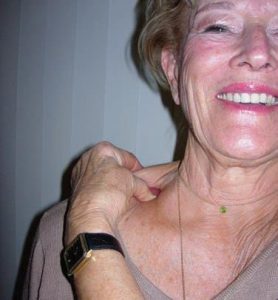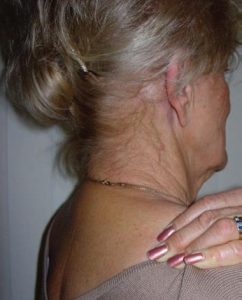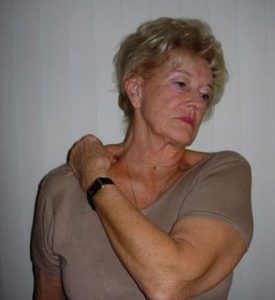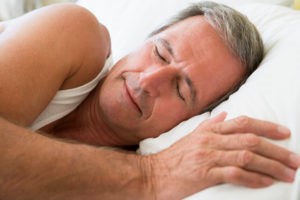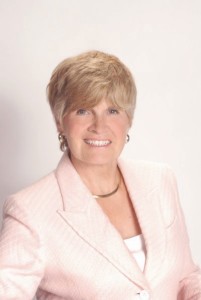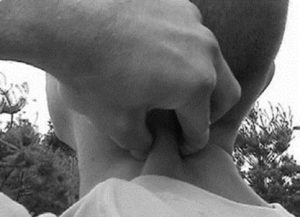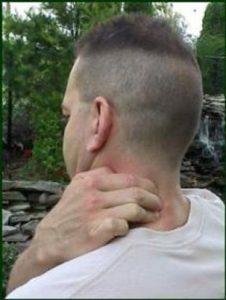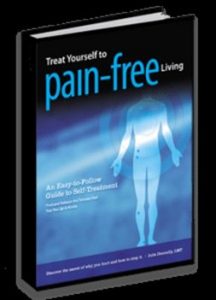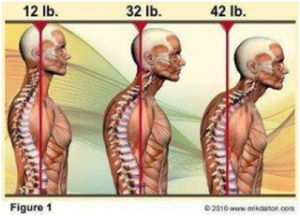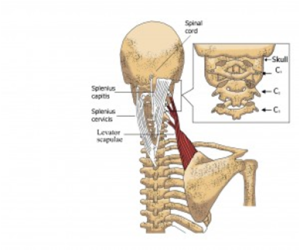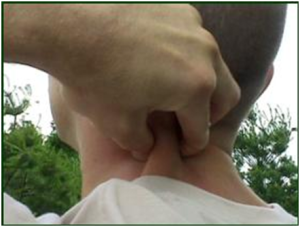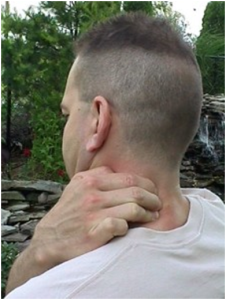What Causes Pain In Your Neck?
Author: Julie Donnelly, LMT – The Pain Relief Expert
Editor: Dr. Steve Chaney
 Happy Spring! My friends and family up north told me that it was a looooog winter, so I’m sure all you “Snow Birds” are thrilled to have Spring here at last.
Happy Spring! My friends and family up north told me that it was a looooog winter, so I’m sure all you “Snow Birds” are thrilled to have Spring here at last.
Here in Florida, the flowers are blooming, and we’re still enjoying beautiful weather in the 70’s and low 80’s. And, of course, we are ignoring the thought of the summer coming soon.
Please Help Me
I’ve learned that for TEDx to invite me to do another talk, I need to have my current talk, “The Pain Question No One Is Asking”, shared with many people, plus I need to have comments so I can respond. If you haven’t watched it yet, you will learn a lot about pain and how to treat it. Plus, you can help me by commenting on it and sharing it with your friends.
Maybe you have already watched it, if so, thank you. Would you mind watching it again and adding a comment?
In either case, you can either go to YouTube and put in “Julie Donnelly, pain” or if you’re reading this newsletter online, you can go to https://www.youtube.com/watch?v=dSrxURd8ZJk&t=133s.
Thanks a lot!
What Causes Neck Pain?
This month I’ve had so many people come in with neck pain and headaches, that I decided I need to share what causes neck pain and a treatment with you. There are a lot of different treatments for the neck, some you can do, and others that you need me to do for you.
Neck pain and headaches are widespread because there are so many things we do every day that cause these two kinds of pain. A big problem is our cell phones, and we can’t get rid of them, so we just need to know how to constantly be aware of it and treat ourselves frequently.
It’s amazing how fragile our necks are, and how vulnerable they are to injury, yet for most of us we go through life with nothing more than a headache every now and then.
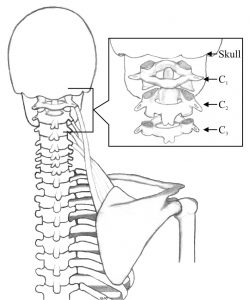 If you have had a car accident you may have suffered from whiplash, which causes horrific headaches, because the bones of your neck have been forced out of alignment. In many cases neck pain is either caused, or complicated, by tension in a muscle called Levator Scapulae.
If you have had a car accident you may have suffered from whiplash, which causes horrific headaches, because the bones of your neck have been forced out of alignment. In many cases neck pain is either caused, or complicated, by tension in a muscle called Levator Scapulae.
As you see on the graphic to your left, the muscle originates on the first four cervical vertebrae, and inserts into your shoulder blade (the scapula).
When it contracts you lift your shoulder, making the nickname for this muscle be “the shrug muscle.”
Your brain goes into your spinal cord, and then your spinal cord passes through the center of the vertebrae all the way to the bottom of your spine.
However, when the muscle is in spasm (tied in a knot) it is pulling down on the cervical vertebrae at the very base of your skull. This pulls the bones to the side and down and pushes the bone into your spinal cord on the opposite side.
Frequently a client will come in with neck pain, or headache pain on one side, but I find the muscle tension on the opposite side.
Spasms in the levator scapulae muscle will also tilt your head to the side, and it can cause pain to your shoulder and down the upper/center part of your back.
Relief From Neck Pain
There are several effective ways to treat your neck and shoulders, the following are just two of them. I have written books that teach many more self-treatments in case you want to learn more.
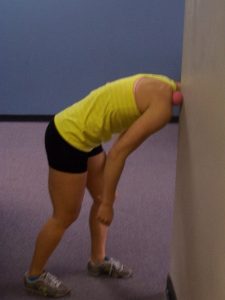 Put a ball, preferably the Perfect Ball, on the very top of your shoulder.
Put a ball, preferably the Perfect Ball, on the very top of your shoulder.
Bend at your hips and put the ball on the corner of a wall, pressing the top of your shoulder into the ball. Then move up and down so the ball is rolling across the top of your shoulder, from the front toward the back of your shoulder.
The goal is to lengthen the Levator Scapulae muscle, so it takes the strain off your cervical vertebrae. The Perfect Ball is ideal for this task because it is solid in the center and soft on the outside, preventing bruising to your bone.
A second way of treating your shoulder muscle is to press your thumb into the “well” at the front of your shoulder, just above your collar bone.
And press your fingertips into the back of your shoulder, as shown in the picture to the left.
Deeply press your thumb into your fingers, tightly squeezing the thick piece of muscle that is between your thumb and fingers.
Then slowly drop your head in the opposite direction so you can stretch the muscle fibers.
You Can Help Yourself Relieve Pain Quickly
I’ve been helping people release pain since 1989, and back in the beginning I realized that the only way people stay out of pain is to either come to see me almost every day (not a great option!) or learn how to continue their therapy at home. That’s why I wrote my books, to help you help yourself on a regular basis.
Treat Yourself to Pain-Free Living has over 200 pictures, colorful charts to show you where you feel pain and where to treat to relieve it, and detailed explanations that explain how to treat painful muscles from your head to your feet.
Clear and easy to follow, people have told me they call it “their bible for finding solutions to pain.”
The 15 Minute Back Pain Solution has been written specifically to address the muscles that cause low back pain, sciatica, sacroiliac joint pain, and even knee pain.
Pictures and graphics, and detailed text will explain how to do each step.
 If you have either carpal tunnel syndrome or trigger finger, you’ll want to get the Julstro System For Hand/Wrist Pain And Numbness.
If you have either carpal tunnel syndrome or trigger finger, you’ll want to get the Julstro System For Hand/Wrist Pain And Numbness.
A specialized tool was developed to enable you to get the proper strength and focus on the spasms that cause both these problems. The TotalTX tool also can be used for problems from your shoulders to your lower legs, and it’s all in the “how to” book included with the Julstro System.
Plus, with each one of these products you will receive a gift of a Julstro Perfect Ball (a $9.00 value) so you’ll have the tool to reach difficult spots, and to do all of the treatments taught in the books.
Wishing you well,
Julie

